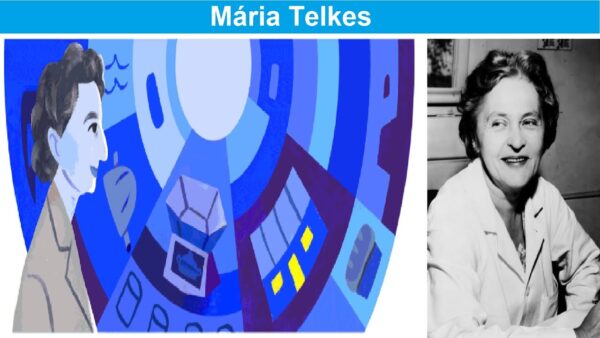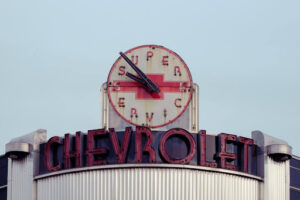Google, the search engine giant Google recognizes Hungarian-American biophysicist scientist as well as innovator Maria Telkes, one of the pioneers of solar power, the “Sun Queen”, with an animated Google Doodle on December 12 2022. Here are some fascinating and entertaining information concerning Maria Telkes.
Who was Maria Telkes?
Maria Telkes, a Hungarian-born American scientist who was alive from 1900 to 1995, and was dubbed “Sun Queen” for her contribution to solar energy research. She was among those pioneers of the area of solar energy usage in the real world.
Personal Information about Maria Telkes
Birth date: 12 December 1900
Birthplace: Budapest, Austria-Hungary
Died on: 2 December 1995 (aged 94)
Death place: Budapest, Hungary
Father name: Aladar Telkes
Mother name: Maria Laban de Telkes
Known for: Thermoelectricity
Awards: National Inventors Hall of Fame
Interesting Facts About Maria Telkes
Maria Telkes was born on December 12, 1900 as the daughter of Aladar as well as Maria Laban de Telkes, in Budapest, Hungary.
She went to the high school and university in Budapest which is where she was born and raised. She graduated with an B.A. in 1920, and she earned a Ph.D. on physical chemistry, in 1924 at Budapest University, where she did research in physical chemical chemistry.
Doctor. Maria Telkes went to the United States in 1925 to visit a family member that was Hungarian consul of Cleveland, Ohio.
Her offer was for a position as a biophysicist with Cleveland Clinic Foundation. Cleveland Clinic Foundation while she was in the US to investigate how energy is generated from living creatures. She took the offer and worked for 12 years under the direction of the scientist George Crile.
Maria Telkes and Crile collaborated in the writing for the novel Phenomenon of Life, which presented their findings and they developed an electrochemical mechanism that recorded brain waves.
Additionally also, Dr. Maria Telkes did research to determine the source of this energy and what happens after a cell dies and how energy is altered as a normal cell turns into cancerous.
The year 1937 was the time that Maria Telkes became an American citizen in 1937. She began her career as a research engineer for Westinghouse Electric in the same year she completed her studies in the Cleveland Clinic.
In the following 2 years she conducted research and obtained patents on new thermoelectric devices. These devices convert heat in electrical electricity.
When she was attending high school Maria Telkes had been fascinated by solar energy. The year 1939 was the time she was a member of the Massachusetts Institute of Technology Solar Energy Conversion Project. In the project, she continued researching thermoelectric conversion devices. Just in these devices the energy source was from the sun.
Professor. Maria Telkes developed a method to store solar energy by using sodium sulfate during his time studying at MIT. When she was in 1939, she began studying in the field of solar energy, for the first time.
Because Telkes is widely regarded as one of the first pioneers of solar thermal storage She is often referred to as “The Sun Queen.” Maria Telkes eventually rose to the rank as associate research professor at MIT after the end of World War II.
Because of Maria Telkes’ expertise, due to her experience, the US government commissioned her to serve as an advisor to civilians for the Office of Scientific Research and Development (OSRD) during World War II.
The saltwater was evaporated thanks to Maria Telkes’ solar still that made use of the sun’s warmth. The still was able to save the lives of numerous sailors who were torpedoed and killed by aircraftmen in World War II because it was small enough to be put in life rafts that provided drinking water.
The still could also be built to store a significant amount of water that was fresh. It was the Virgin Islands, which did not have a large reliable supply of fresh water was the first place the system was put into operation. The year 1945 was the time that Telkes received an OSRD Certificate of Merit in recognition of her invention.
A revolutionary energy-efficient solar system for heating was conceived and developed by Telkes in 1948. It was installed in a solar home built on the sculptor Amelia Peabody’s property located in Dover, Massachusetts; Eleanor Raymond was an architect who was the architect who designed the house.
The first winner from the Society of Women Engineers Achievement Award was Maria Telkes in 1952. In 1964, she was a speaker at the inaugural International Conference of Women Engineers and Scientists in New York.
Telkes was admitted into her current home in the College of Engineering at New York University in 1953, and established the solar laboratory. She continued to develop thermal systems, solar ovens and solar stills.
The poor villagers relied on Maria Telkes solar ovens that were cheap, simple to build and very simple to construct.
The Dr. Maria Telkes’ innovations in this area led to the development of a quicker method of drying crops. Telkes was awarded $45,000 of the Ford Foundation in 1954 to make solar ovens.
As the director of research for the solar energy laboratory in the Princeton division of the Curtis-Wright company in 1958 the scientist Professor. Maria Telkes researched solar dryers and the possibility using solar thermoelectric generators to power outer space. She also devised the heating and energy storage system for a lab facility which Curtis-Wright built within Princeton, New Jersey, when she was employed in the area.
Maria Telkes worked on developing materials that could be used to protect temperature-sensitive instruments from 1961 to 1963.
As the Dr. Maria Telkes became the director of the solar power lab in MELPAR Company in 1963, she was a solar energy expert. MELPAR Company in 1963, she was once again thinking about how to extract fresh water from seawater.
Maria Telkes joined the University of Delaware’s Institute of Energy Conversion in 1969. She developed materials that could be used to store solar energy, as well as devices that can transfer heat energy more efficiently.
She was granted patents on how to store solar energy within the United States and other countries because of it. A prototype solar-powered structure in the University of Denver known as Solar One was built using her techniques.
Maria Telkes also worked on cooling devices that were able to be utilized during the hot summer day, the next day, by keeping coolness from the night.
In 1977 In 1977, in 1977, the National Academy of Science Building Research Advisory Board presented Telkes in appreciation of her contribution to the science of solar-heated buildings . She also received she was awarded the Charles Greeley Abbot Prize of the American Solar Energy Society. Telkes was a part of the group of pioneers like Frank Lloyd Wright and Buckminster Fuller who also received the award because of this.
In the year that Maria Telkes retired from active research in 1978, she was awarded her title professor emeritus by the University of Delaware. From 1992 on she continued working as consultant.
The Dr. Maria Telkes worked with the U.S. Department of Energy to create the world’s first solar-powered residence located in Carlisle, Massachusetts, in the year 1980.
On the 2nd of December 1995 on December 2, 1995, the Dr. Maria Telkes died while returning to her home town of Budapest, Hungary, for the first time in over 70 years.
The general consensus is that Maria Telkes came up as a prolific designer of practical thermal devices. One example was a small desalination device (solar still) for lifeboats, which utilized the power of solar energy and condensate to draw drinking water. The still helped save life of airmen as well as sailors who would be without water had they been abandoned at the sea.
Through the course of her professional career Maria Telkes acquired more than 20 patents. One of that was for a functional solar oven. She continued to work on solar-energy-related applications.
On the 12th of December, 2022 Google introduced an animated Google Doodle on its homepage to celebrate Maria Telkes. In 1952, on this day the Dr. Telkes was the first to be awarded The Society of Women Engineers Achievement Award.

















Be First to Comment